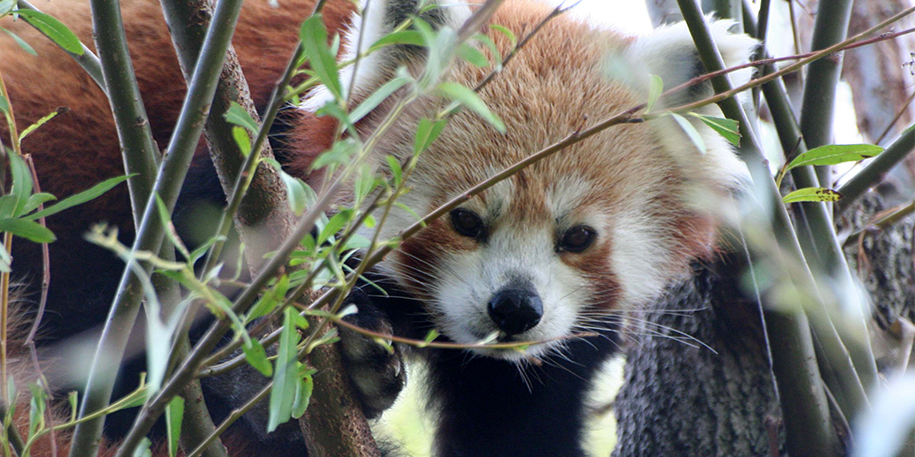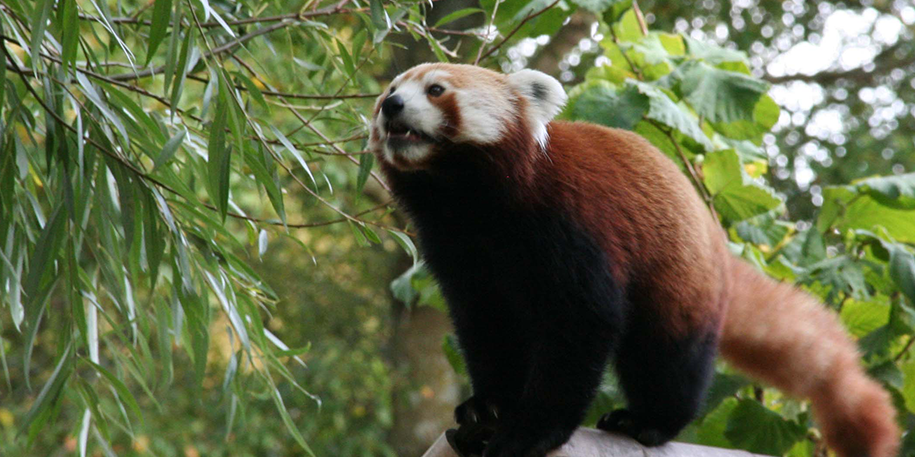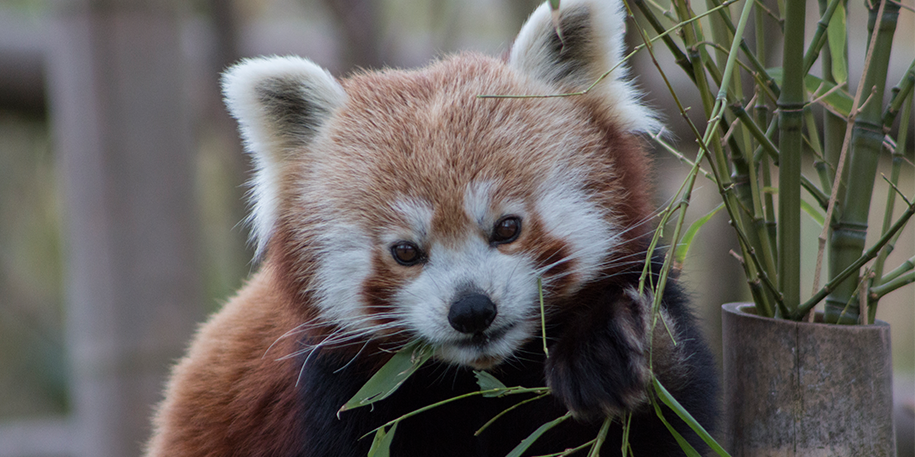Hurry! Save 25% on 2026 memberships!
5 things you probably didn't know about red pandas

Saturday 19th September is International Red Panda Day - so we wanted to share some of our favourite panda facts with you.

They’re not really pandas
They look like foxes, have the faces of raccoons, and are built like cat-sized bears. The red panda has managed to well and truly confuse scientists over the years, first being considered a relative of the giant panda, then it was classified as a relative of the raccoon. Now, however, red pandas have been placed in their own unique family — the Ailuridae.
They’re pretty good at hiding
Okay, so if you’ve visited our Red Panda recently you might already know that. While red might not seem like the most obvious camouflage colour, it works really well for red pandas. They live in trees covered in reddish-brown moss, so they blend right in and are able to prevent themselves becoming supper for a hungry snow leopard.
They really love trees
Red pandas really love trees. They love them so much, that when they’re not lounging around in trees, they’re eating trees. But being so dependant on trees is no easy job, you need specialist equipment. Red pandas possess a “false thumb,” which is actually an extension of their wrist bone and allows them to move from branch to branch with ease.
They make hairy feet look totally adorable
Hairy feet have never been so adorable. The soles of adult red pandas’ paws are covered with hair that helps them to navigate wet and treacherously slippery branches, as well as icy rocks and snow-covered ground.
If we save red pandas, we’ll save ourselves
Red pandas are listed as vulnerable on the IUCN red list and one of the major threats they’re facing is habitat loss. If we can save the habitat of the red panda, we will not only be helping save other species – countless birds, clouded leopards and hoofstock – but we will also be saving the part of our planet that provides one fifth of the world’s population with clean air and clean water.
Have you ever wanted to be mesmerised watching a red panda eating bamboo? Head over to our YouTube channel to see our latest video!
